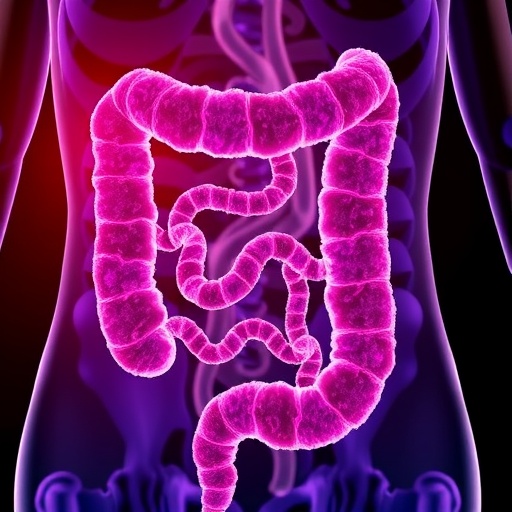
In the realm of cancer research, there remains a profound and devastating challenge that largely evades public discourse despite its prevalence and lethality: cachexia. This wasting syndrome, characterized by the severe loss of muscle and fat tissue, predominantly unfolds during the late stages of chronic illnesses such as cancer. Today, Cold Spring Harbor Laboratory Associate Professor Tobias Janowitz offers an illuminating perspective on cachexia, not solely as a physical manifestation but as a complex neuroimmune disorder deeply embedded within the brainâs motivational and behavioral circuits.
Janowitzâs insights, articulated in his forthcoming essay titled Of Hope from Fading Will: Interoceptive Signaling and the Behavioral Biology of Cachexia published in Neuron, probe the intricate interplay between the brain and immune system that underpins this syndrome. At the heart of the essay lies a personal narrativeâthe words of Janowitzâs late mother, who, in the throes of cachexia, expressed herself as âall used upâ with “no will left to live.” These deeply human reflections underscore the clinical urgency of understanding cachexia beyond mere metabolic deterioration.
Cachexiaâs pathophysiology has traditionally been viewed through the lens of peripheral tissue wasting and inflammation. However, emerging research, including that spearheaded by Janowitz and colleagues, is positioning the syndrome within a neurobiological framework. This framework emphasizes the role of interoceptive signalingâthe brain’s ability to perceive and integrate signals from internal bodily statesâin driving the profound behavioral changes observed in cachectic patients, including reduced appetite, fatigue, and diminished motivation.
The essay highlights novel experimental evidence revealing that immune system dysregulation impacts specific neural circuits, particularly those involved in motivation and reward processing. This finding pivots the paradigm from viewing cachexia simply as a consequence of metabolic imbalance to recognizing it as a syndrome wherein neural pathways modulate behavioral outputs in response to systemic inflammation. Such advancements have profound implications for therapeutic interventions, suggesting that targeting neuroimmune interactions may alleviate both physiological and psychological distress in affected patients.
Janowitzâs work advocates for a paradigm shift in cancer research, urging oncologists, neuroscientists, and immunologists to merge their expertise. This interdisciplinary approach aims to decode the complex signaling cascades between the immune system and the brain that precipitate cachexia. By embracing patient-reported symptoms as vital data rather than anecdotal afterthoughts, researchers can glean insights into the subjective experience of disease and tailor treatments that address not only physical wasting but the erosion of willpower and quality of life.
From a clinical perspective, the syndrome significantly diminishes survival probabilities and complicates therapeutic regimens in cancer care. Cachexiaâs impact extends beyond muscle atrophy, exacerbating treatment resistance and undermining patientsâ capacity to engage with life-prolonging therapies. Therefore, understanding the neurobehavioral mechanisms that drive symptomology is imperative for designing holistic treatment protocols that integrate metabolic, immunological, and neurological targets.
The essay also casts light on the importance of interoceptive networksâneural systems that monitor and interpret physiological states such as hunger, pain, and fatigueâand their disruption in cachexia. Janowitz discusses how aberrant signaling within these networks precipitates the loss of appetite and generalized malaise, common features of the syndrome. These findings illuminate how central nervous system dysfunction contributes to the multifaceted clinical phenotype, unveiling potential biomarkers and therapeutic entry points.
Importantly, Janowitzâs narrative underscores the criticality of patient-centered science. The poignant account of his motherâs experience bridges the gap between empirical research and lived reality, reminding the scientific community that behind every data point lies a human story. This empathetic lens challenges researchers to reframe symptoms like fatigue and anorexia as informative signals guiding the understanding of disease progression and patient well-being.
The call for collaborative research efforts is complemented by the identification of promising avenues for pharmacological intervention. Modulating neuroimmune pathways, potentially through targeting pro-inflammatory cytokines or neural receptors involved in motivational drive, represents a frontier in cachexia treatment. Such strategies could revitalize patient will, improving both physical resilience and psychological state.
Moreover, this evolving comprehension of cachexia necessitates the incorporation of advanced imaging and molecular techniques to unravel the brainâs role in the syndrome. Functional MRI and neurochemical profiling, for instance, could delineate the alterations within motivational circuits, fostering targeted approaches to symptom management and rehabilitation.
Janowitzâs essay firmly establishes cachexia as a syndrome that transcends metabolic failure, positioning it as a critical interface of brain-body communication. By illuminating the neurobiological underpinnings, the work not only enhances scientific understanding but also carries profound implications for improving patient care and outcomes across oncology and chronic disease management.
In conclusion, Of Hope from Fading Will is a pivotal contribution to science that reframes cachexia within the contexts of neuroscience and immunology. It encourages a holistic view of disease that values the narratives of patients as drivers of discovery and innovation. Ultimately, this reconceptualization offers hope for novel therapies that can restore vitality and agency to individuals wrestling with the debilitating grip of cachexia.
Subject of Research: Cachexia neurobiology and interoceptive signaling in cancer patients
Article Title: Of Hope from Fading Will: Interoceptive Signaling and the Behavioral Biology of Cachexia
News Publication Date: 3-Sep-2025
Web References:
DOI link to the article
Cold Spring Harbor Laboratory Researcher Tobias Janowitz
Link between brain and immune system in cachexia
References:
Janowitz, T. (2025). Of Hope from Fading Will: Interoceptive Signaling and the Behavioral Biology of Cachexia. Neuron. https://doi.org/10.1016/j.neuron.2025.06.019
Image Credits: Cold Spring Harbor Laboratory
Keywords: Cachexia, Cancer Research, Neuroscience, Metabolic Disorders, Neural Pathways, Immunology
Tags: behavioral biology of cachexiacachexia in cancer patientscancer research and cachexiachallenges in cancer treatment and cachexiaclinical implications of cachexiainteroceptive signaling and cachexiamuscle and fat loss in chronic illnessneurobiology of chronic illnessneuroimmune interactions in cachexiapersonal narratives in medical sciencepsychological aspects of cachexiaunderstanding cachexia beyond metabolism




